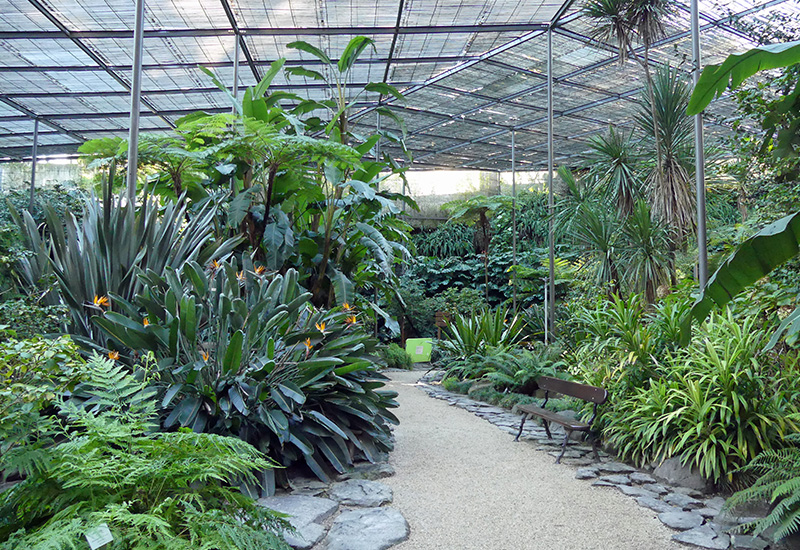We approached the entrance alongside a lake, the complex rising up before us up the cliffs of the old quarry hugging the north side of the lake. A huge sign to the left of the entrance informed us that we could “travel the world through more than 300 botanical species.” The Estufa Fria in Lisbon is a treat for all gardeners and nature lovers.
Estufa Fria (which literally translates as “cold greenhouse”) is a large greenhouse complex covering one and a half hectares within Eduardo VII Park, situated at the northern end of Avenida de Liberdade in the centre of Lisbon. Conceived and designed by Portuguese architect Raul Carapinha, it was opened in 1933. It utilised the site of an old basalt mine which was abandoned when a natural spring was discovered close by.
The gardens consist of three parts: the largest and oldest is the original cold greenhouse which covers about fifty-five per cent of the total area. It has no heating at all. Instead, the roof is made up of wooden slats, which give a dappled shade and create an environment that protects the plants so that they never get excessively hot or cold. The next largest area is Estufa Quente or hot greenhouse. This covers three thousand square metres and is enclosed in glass to create a tropical atmosphere. Lastly, there is Estufa Doce or sweet greenhouse, which houses the cacti and succulent collection. The entire greenhouse complex features small lakes, waterfalls, and sculptures. Some of the sculptures are by noted twentieth-century Portuguese sculptors.

When Eduardo VII Park was remodelled in 1945, the current entrance porch, lake and a visitor’s reception room, called nave (the ship), were added to the complex. In 1975, the hot and sweet greenhouses were built so that tropical and equatorial plants could enhance the botanical collection. In 2009, the original Estufa Fria was closed due to safety concerns over the steel structure but reopened in 2011 after extensive renovation works.
We entered the Estufa Fria first which was mind-boggling as it was so enormous. Tall trees, palms and large shrubs reached for the light whilst underneath were lush plantings of ferns, fuchsias, begonias, bromeliads and birds of paradise, to name but a few of the plants. Meandering wide paths invited you further into the complex towards a small lake at the far end. To the left, the original quarry walls were cleverly planted with lush Monstera or Swiss Cheese plant and lots of ferns, creating a verdant sanctuary in the middle of a busy capital city.



We walked up some steps into the Estufa Quente, where various paths took you further up the quarry walls, which had been cleverly terraced so you could get a bird’s eye view of the hot house. Here, the plants were more tropical, with staghorn ferns and orchids vying with what I would consider exotic house plants, such as crotons with their beautiful red and yellow leaves. Finally, we walked through the succulent and cacti house, which had some impressive old specimens.



Estufa Fria is open between April to October from 10.00–19.00 and from November to March from 09.00–17.00. Tickets cost 3.25€ or 1.63€ for concessions. It is closed on 1 January, 1st May and 25 December. The nearest metro stations are Marquês de Pombal or Parque. If you have time on your hands and want to relax in a peaceful lush setting with no sound of any traffic, then I highly recommend a visit.
Tamsin Varley is a member of Clube Dos Bons Jardins, a small, friendly multi-national garden club that meets at different locations around the Algarve on the 2nd Tuesday of every month except over the summer with an optional lunch afterwards.
Photos © Tamsin Varley













